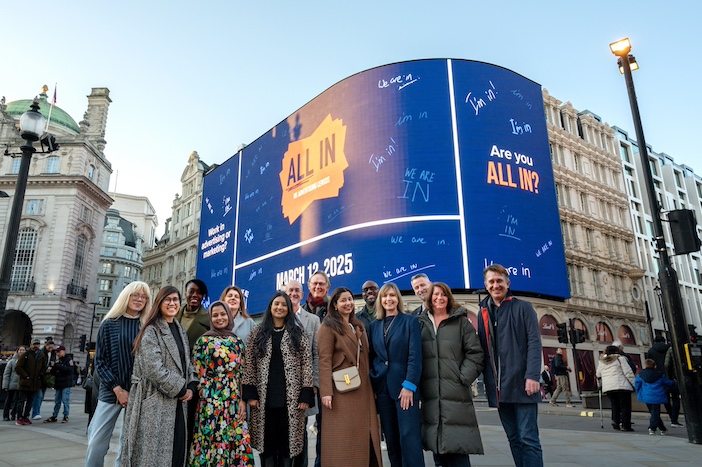
Celebrating Pride and the LGBTQIA+ community is an all-year-round commitment, so we’ve curated a special spotlight series where we chat with the visionary creatives in our far-reaching communities, to learn more about what they do, why they do it, and what value Pride holds for them.
Guy Watson, the Artistic Director of Cornish theatre company, Cousin Jack’s, divulges a very special story of two people who made history, and how the smallest of inclusion measures can make the biggest difference. Guy uses he/him pronouns.
When did you first realise you wanted to work in theatre and performance, and what were the driving factors to making it a reality?
My story starts with a woman called Mrs Dunk. She was my tutor in my first year of secondary school – she was pretty epic, and very, very Welsh. On the very first parents’ evening that we had, she said to my parents ‘I think your son will be a theatre director’. At the time, I didn’t even know what theatre was; we didn’t have school plays and my primary school had nothing like drama on the curriculum, so it felt like a completely random thing for her to say. I went on to secure a supporting role in the local Bugsy Malone production, (I swear everybody starts with Bugsy Malone), and despite never having shown an interest in theatre before, had a lot of fun and then instantly loved it from then on. I abandoned my dreams of being an architect, aged 11, and decided to change that into working in theatre. Quite quickly I realised acting wasn’t quite right for me (I put it down to being quite bossy in life), and considered producing and directing instead. I’d directed my first play when I was 18 which was James and the Giant Peach; I had it as an audiobook when I was very little and used to listen to it all the time. It occurred to me recently that I basically created the stage version of the audiobook and the way I imagined things happening in my head became adaptations for the story in my first production. I directed various other shows, some with professional casts, but I wanted to have a better understanding and overcome some challenges that I was struggling with in a rehearsal room. I applied for the only degree in directing in the UK at the time, which was at Drama Centre London. I was very lucky to get in – there were only five of us that got accepted onto the course – and moved to London to complete three years of studying, which was both a harrowing and enlightening experience. I did learn a lot from it, but I wouldn’t want to repeat it.
I didn’t find London particularly inspiring at all. I seemed to make better work in Cornwall, so I moved back. And that was eight or nine years ago. You’re quite lucky sometimes as a director or a producer because you can carve out your own path and choose where you land and what you work on, whereas actors often have to move where the work is. Being in a place that inspires you and where you feel you belong really affects the work you create. I was quite surprised when I first left Drama Centre that lots of people I knew didn’t seem to feel any sort of affinity with London; I could have really felt trapped by London if I followed the mentality that ‘to have a serious career in the performing arts, I must be based in London’. People think that’s the route you need to take to make it in the performing arts industry, by staying in a major city. I’m not saying the route is as straightforward if you leave the big cities, but there are ways of navigating it. You’ve just got to find more creative ways of doing things in the process and collaborate with people in places that inspire you. Of course, there are pros and cons to working in a rural setting compared to an urban place. For example, I lived in East Finchley for a while where there was a big post office building that had been closed down the whole time I lived there. I was desperate for rehearsal space and imagined all sorts of weird things we could do in there. I found out who owned the building, I wrote a letter to them, I contacted 100 other people, and I just could not make any progress with it. The reality was very much: there were 500 people trying to do all sorts of things with this space, but the answer is no to everything. Whereas, in Cornwall, I think people go, ‘Oh, that’s an interesting concept. Yeah, all right, give it a go’. There is a real difference in approach depending on where you are. If you find somewhere that suits your way of working, run with that.
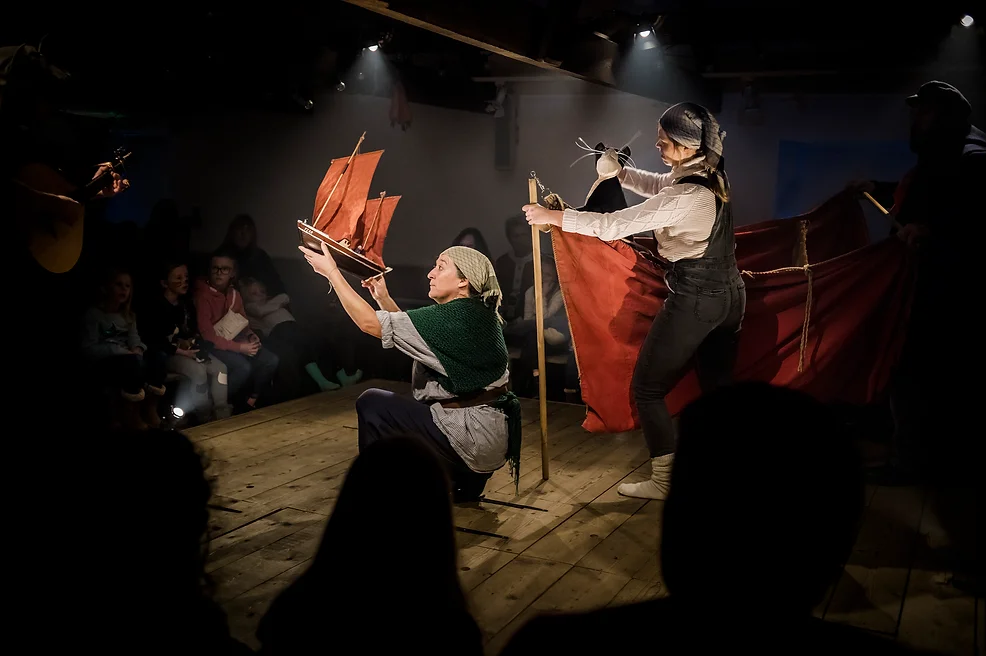
The Mousehole Cat
How do you, or how does Cousin Jack’s, champion Pride in the work you do?
It was an interesting journey coming to answering this question. Over recent years, I’ve only produced a single project that, you could say, has a specific LGBTQIA focus. So, I spoke to a great friend of mine who I’ve worked with a lot, and said ‘What am I supposed to say for this? I don’t think I really do anything’. And they responded with, ‘You have no idea how many things you do that you think are standard practice but are actually not’. The way I run things, I don’t really associate as activism within the industry because I assume that it is standard practice, as it should be, and I assume everybody’s doing it because they should be. One example is the language we use in our contracts. Our original contract templates from ten years ago had he/she written throughout because that was the world we lived in at the time. Now, that’s no longer relevant as language and it would mean our contract wouldn’t be inclusive for swathes of people that we either work with or want to work with. So, we removed gendered language in our contracts a while ago and it proved that some simple administrative things can be really powerful. All our rehearsal rooms start with introductions of pronouns, too. We talk about creating a safe space within our rehearsal rooms, beyond the social contracts that we set out with behaviour and attitude expectations, embracing flexibility and adapting the space to accommodate people’s needs. That’s not something specific to working with people who have specialist needs but simply to working with human beings. I’m a believer that if you create a space in which everybody is respected, people won’t take the piss. As long as it’s a safe space and a place where people are open to listening. I think it’s quite an unhelpful approach to feel like unless you’re doing work that is solely focused on these issues, it’s not something you need to think about or prioritise. But that’s wrong; you should prioritise championing diversity across all areas of production and performing, at all times.
Casting is something we regularly go back to; we’re always reassessing what bits are working, what bits aren’t working, and where are we accidentally excluding people. How’s that happened and what do we do to rectify that? One of the things that we’ve renewed our focus on recently is gender casting. For example, when someone who identifies as female is cast in a traditionally male role, or a male character from a book, a strange pressure seems to emerge for that person to present stereotypical gender characteristics. They start to present uber-masculine mannerisms like walking with their legs wildly apart. Just because that character might identify as male, who knows what their characteristics are, let’s talk about that and decide what those characteristics might be. But let’s not base them on some weird gender stereotype that you feel you must portray just because you’re playing a male part. We did a project earlier this year called Percy Pengelly and wibble-wobble where we challenged exactly that. In the book version, there’s a character who is famous for having a huge moustache. We didn’t want to move away from the big moustache because it was a visually important detail of the character and the show was for children who needed to recognise the character from the book’s illustrations. We stuck with the big moustache but it became a huge part of the character’s development, and the woman who was playing that part didn’t jump in any way to present more ‘traditional’ male characteristics. The character became such a fascinating creation of a person with all sorts of qualities that were based on their story, and on what was needed to best tell the story and the issues we wanted to address in the production. The fact we were visually presenting somebody with a big moustache was just part of the individual characterisation, rather than being a mechanism to present them as a man.
What value do you believe diversity, inclusion, and representation to bring to the Creative Industries?
Without giving too quantitative an analysis, I think there are two major things that the creative sector does well and can do more of. The first one is in building a progressive society. We have a responsibility to create change, and lots of us are in some very powerful positions where we can make decisions about who we put in front of hundreds and thousands of people on stages and screens. In this process, we actively make a choice to put generic social norms in front of audiences, or we can make a choice to elevate people who are underrepresented, to really look at people who are intentionally discriminated against and create a platform for their experience and skills. It’s going back to what I said earlier; you don’t have to be in an organisation that solely focuses on these challenges in order to make big changes. It’s better for it to be embedded in the way you run things day-to-day. My second point is incorporating new ways of working and new ideas. Embracing people’s lived experiences influences your practice, the projects you choose to work on, and generates new creative processes. There’s always an opportunity to bring something completely different to what you do, which is such a healthy and organic way of developing your work. The more you let in, the more can be made.
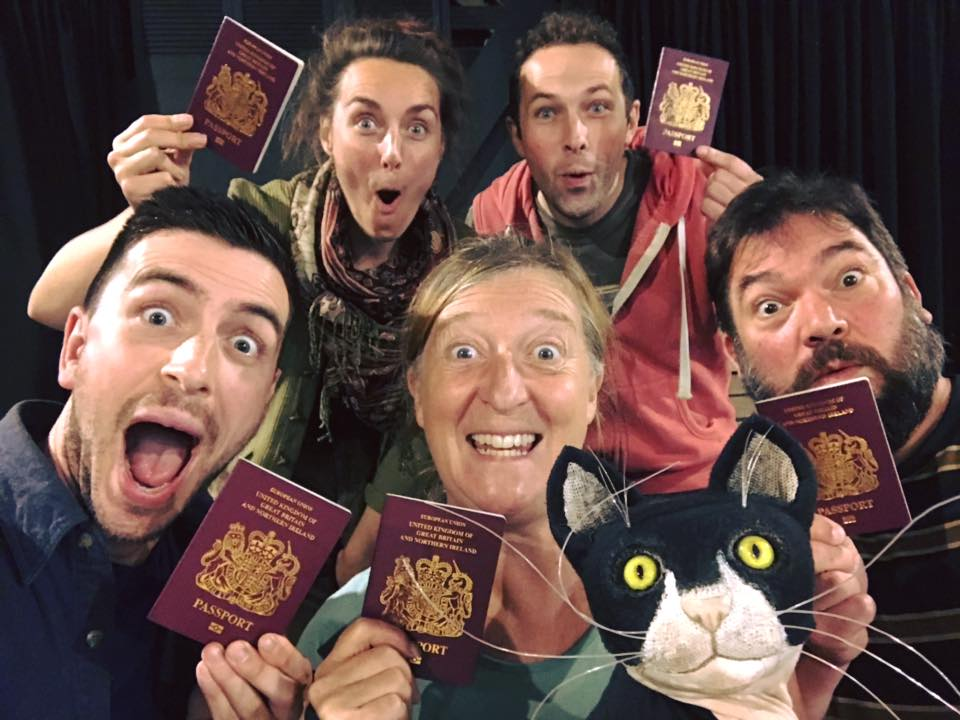
Taking The Mousehole Cat to the USA
Is there more that needs to be done to ensure LGBTQIA+ creatives and talent have equal opportunity in the performance industry(ies)?
Absolutely. I often get a bit touchy about work that preaches to the converted as I think there’s a real importance in creating work that talks to communities who aren’t affected [by bias]. We all need art that inspires us, that reminds us that we’re not lone voices doing this work and that makes us feel like we’re part of something bigger. But there are also large demographics of people within the public that don’t come up against these sorts of conversations in their everyday life, in a way that we might do by having interviews like this, for example. I think it’s important to acknowledge the fact that we can, and should, talk to those people and have genuine, open and, dare I say, educative conversations, where we discuss things that we believe in, in a way that is accessible to everybody regardless of the experiences that they’ve had. Sometimes that work can be slightly forgotten because it’s hard and it can be painful because you are putting yourself in vulnerable positions with people who don’t understand hurtful language, or, are genuinely ignorant because they haven’t come into contact with the things or situations you want to talk about.
Do you think the Creative Industries can be the solution to societal challenges? And if so, how?
I am going to start by reading a poem. This is a very well-known poem, you’ll know halfway through, but it really helps illustrate some of the points I want to make.
First they came for the Communists
And I did not speak out
Because I was not a Communist
Then they came for the Socialists
And I did not speak out
Because I was not a Socialist
Then they came for the trade unionists
And I did not speak out
Because I was not a trade unionist
Then they came for the Jews
And I did not speak out
Because I was not a Jew
Then they came for me
And there was no one left
To speak out for me
That was written by a pastor called Martin Niemöller in the Second World War. His story is really fascinating because he was a Nazi party supporter at the beginning of the regime, and midway through the war did a complete U-turn and realised the error of his ways. The reason I want to use that poem as my starting point for this question is if there’s any truth in it, it demonstrates how important it is to support and elevate people who are not represented, or whose experiences differ from your own. Who is it who starts that process? Who starts the ball rolling when that’s not the norm within society? The Creative Industries are at the forefront of sharing stories that are not always ‘conventional’, and challenging perceptions. It’s what we have always done. So, if it’s not us speaking out for these groups of people, who else is going to do it for them? I feel we’re [creators and innovators] incredibly well placed to do it. And we should acknowledge we are the people who can do it, along with the activists who aren’t always directly linked to the Creative Industries. I think people find it frightening to tell the untold stories sometimes. They think ‘Let’s stick with what we’ve always done well’. But when you read the new story, the potential to go ‘What an amazing story, I want to tell that story’ is so great. Often, those are the paintings, the books, and the plays that have been banned throughout history for talking about issues that are seen as ‘not normal’ but need to be.
Give a shoutout to an LGBTQIA+ creative or organisation that makes a difference in the world.
It’s an amazing, individual artist called Emily Faulkner, who I’ve worked with on lots and lots of projects. What makes her really incredible is that she supportively challenges you every step of the way. She brings people on the journey with her, regardless of where you are, where your understanding is, and what your current views are; she will have that conversation with you. And she’ll be honest and open with you and say, ‘I don’t like that’, but never in a way that’s confrontational, never in a way that’s destructive. Because that’s so unhelpful in moving things along with the production process. She’s also about to start her course at Rose Bruford College, which is the very first MA in Queer Theatre and Performance – so she’s about to inspire a whole new wave of people!
This year’s theme for Pride is ‘Looking Back and Moving Forward’. What does this evoke for you?
I’ve got a photograph on my desk of two people that tell a very special story. This is Bob and Edgar.
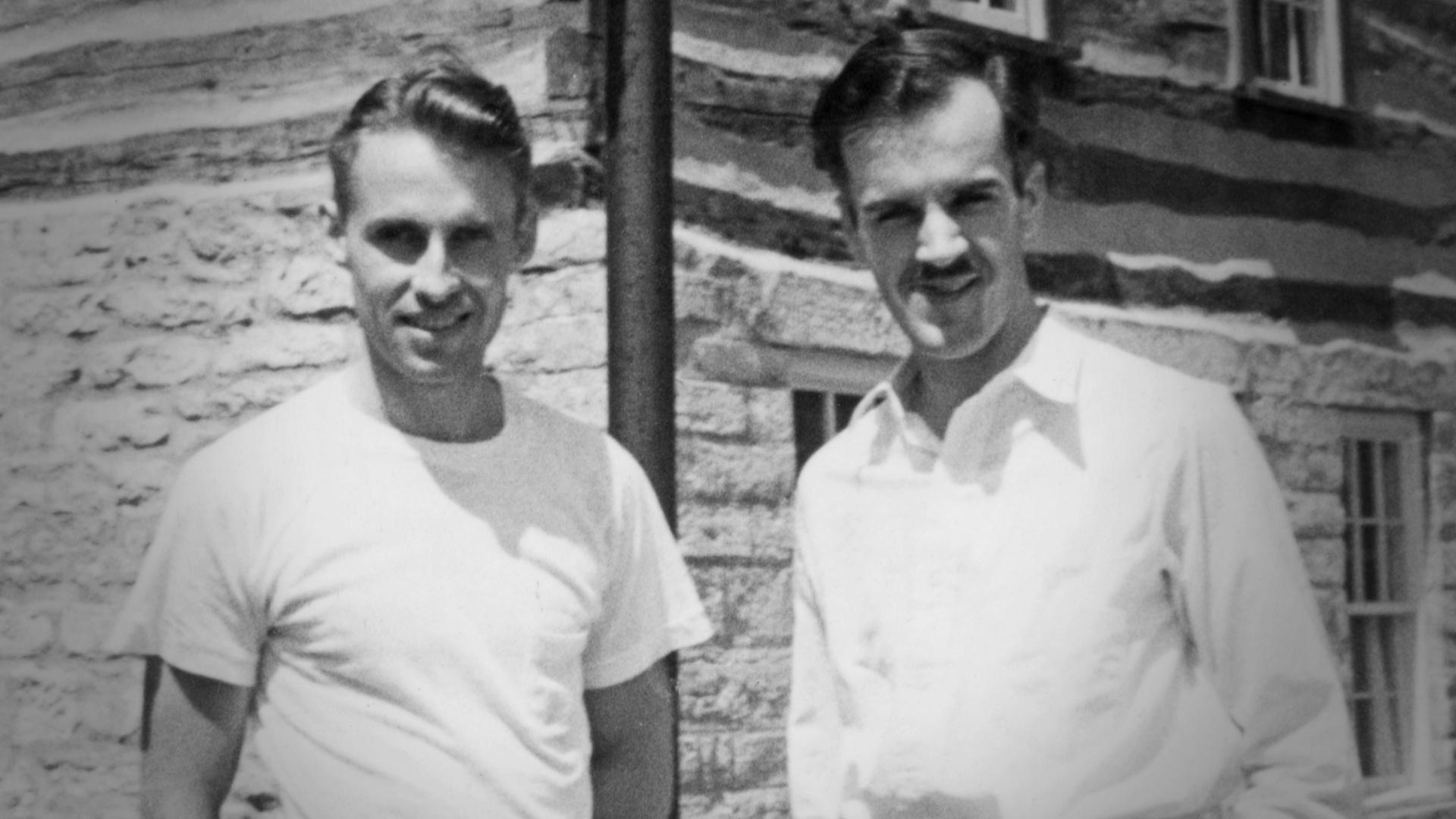
They lived in a place called Mineral Point, which is in Wisconsin and is twinned with Redruth, which is a town just down the road from me. We took our show, The Mousehole Cat, out there in 2019, and it’s a very lovely town in the middle of nowhere in America; relatively middle class, very white, a demographic of mostly 45 to 70-year-olds. It’s a place that when you walk into, you would worry it was a little bit conservative and think, ‘I might be a bit careful what I say around here’. If it wasn’t, however, for the fact that the street was absolutely covered with Pride flags. Now in the planning of the trip, we’d been discussing what sleeping arrangements were needed for people, and the accommodation to be provided for us. I mentioned the fact that me and my partner will need a double bed and my partner’s male. We shouldn’t have to say those things, but I didn’t want to get off a plane and that be something that I’ve got to deal with immediately. So, when I saw the flags as we walked down the street, I had a slight panic and thought, ‘God, they’re not all for us are they, or they haven’t like gone overkill on the welcoming front’. But that wasn’t the case. So, these two guys, Bob and Edgar, were around in the 40s and 50s and they were two men who openly lived together and refurbished a lot of the buildings that the town was really passionate about; they were historic buildings built originally by Cornish miners. And this town completely adopted them and their vision. A community “adopting” two gay men in the 1940s/50s, well, that was a very different world. So, acceptance and queer appreciation is kind of innate to that community, and the idea of looking after people and being welcoming. It really stuck with me that Mineral Point was a place that you could initially perceive as upholding “traditional values”, yet it was anything but. Their story is really important to me and it’s why they sit on my desk.
One day I’ll do a project based on the people who knew them, though they’re not here anymore sadly, they’ve both died. Some of the buildings that Bob and Edgar refurbished are now part of a museum that we took a tour of while we were there. The tour guide said the most brilliant phrase at the beginning, she said ‘they decided to step out together in work and life’. We all slightly melted at that moment. Plus, the whole town knew about them. We got to know a lot of people during our time there, the locals made us feel very welcome, and Bob and Edgar were brought up in conversations all the time. ‘Remember when Edgar did this?’ and ‘He used to help us do this and fix that’; Edgar outlived Bob for quite a long time. They feature in a book called, We’ve Been Here All Along, which is a collection of accounts and stories and photographs of different LGBTQIA people from Wisconsin. It is history told from a very certain perspective and I think it’s crucial that we remember this is not a ‘new’ thing.
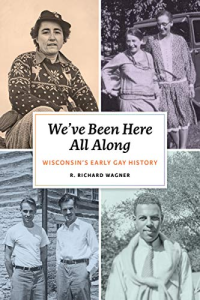
What does creativity mean to you?
Creativity is about moving forward. I don’t think you can move forward without being creative, because otherwise you just end up doing the same things. That doesn’t necessarily mean within the creative sector – funnily enough we’re very good at pushing forward with creative solutions! – but it can apply to any industry or situation. In order to progress, in order to move forward, in order to solve things, in order to be relevant, you need creativity. I’ve recently come back from France where we stayed in Nantes, which is one of my favourite cities in the world.
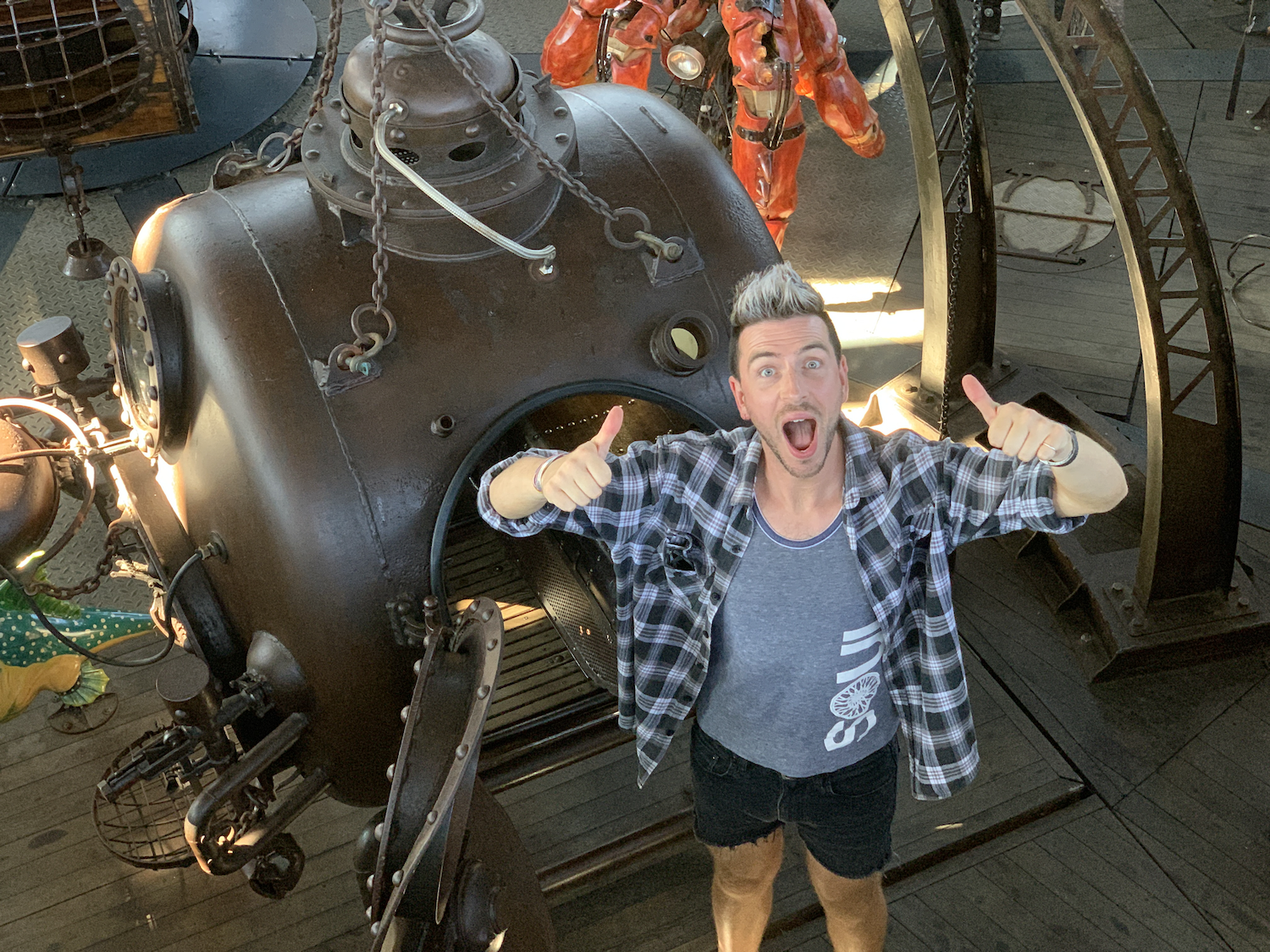
Guy on Les Carrousel des mondes marins at Les Machines de l’île in Nantes
The reason being, that they seem to approach any challenge or obstacle with creativity. That’s their focus. It’s the most amazing place to be, so vibrant and exciting. As a city it’s well supported by the government and creative sector so there are loads of cultural things that are free or easily accessible; one of my favourites is the Green Line which is a massive walking tour and installation that goes all the way around the city. You can branch off at different points to other things but along the route are giant sculptures. It’s built on every year too, so next time you visit there’s more to see and further to walk. They’re very flexible with it; if someone wants to build an installation that’s not set on the Green Line, they adapt and the trail is diverted. As a community, they’re very open to new ideas and the evolution of things, which is great.
What benefits does being part of the Creative UK network bring you? I haven’t come across Creative UK before – this is the first step! We’re creative people in Cornwall and I know you have a growth programme here, so let’s see what happens! I’m looking forward to finding out more.
Related stories

